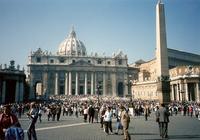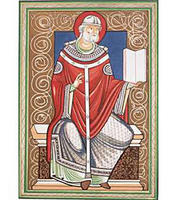You are in: Europe -> Vatican -> Vatican City, and traditional search or Image Gallery will yield results of this site only
Vatican City
| Site number: | 286 |
|
| Type of site: | Cultural | |
| Date: | - | |
| Date of Inscription: | 1984 | |
| Location: | Europe, Holy See, Vatican City State | |
Up to 75 images are shown here. Click on each for more details or on Image Gallery for more images.
Six official UN languages:
Arabic,
Chinese,
English,
French,
Russian,
Spanish
Other languages: Afrikaans, Alemmanic German, Bengali, Bosnian, Breton, Bulgarian, Catalan, Croatian, Czech, Dutch, Finnish, German, Greek, Hungarian, Icelandic, Indonesian, Italian, Lithuanian, Nahuatl, Norwegian-bokmål, Occitan, Polish, Portuguese, Slovak, Swahili, Swedish, Tagalog, Tamil, Turkish, Ukrainian, Venetian, Vietnamese
Other languages: Afrikaans, Alemmanic German, Bengali, Bosnian, Breton, Bulgarian, Catalan, Croatian, Czech, Dutch, Finnish, German, Greek, Hungarian, Icelandic, Indonesian, Italian, Lithuanian, Nahuatl, Norwegian-bokmål, Occitan, Polish, Portuguese, Slovak, Swahili, Swedish, Tagalog, Tamil, Turkish, Ukrainian, Venetian, Vietnamese
| Description: | Demonstrating a rich history and great spiritual significance, the Vatican City is one of the most sacred places in Christendom. Contained within the boundaries of this small state is a unique collection of artistic and architectural masterpieces. At the site’s centre sits St Peter's Basilica, with its double colonnade and a circular piazza spreading in front of it, all bordered by palaces and gardens. Erected over the tomb of St Peter the Apostle, the basilica is the world’s largest religious building; a recipe of the combined creative genius of Bramante, Raphael, Michelangelo, Bernini and Maderna. --WHMNet paraphrase from the description at WHC Site, where additional information is available. | |
| Vatican City, officially State of the Vatican City (Latin: Status Civitatis Vaticanae; Italian: Stato della Città del Vaticano), is a landlocked sovereign city-state whose territory consists of a walled enclave within the city of Rome. At approximately 44 hectares (108.7 acres), it is the smallest independent state in the world. The state came into existence by virtue of the Lateran Treaty in 1929, which speaks of it as a new creation (Preamble and Article III), not as a vestige of the much larger Papal States (756 to 1870) that had previously encompassed central Italy, most of which was absorbed into the Kingdom of Italy in 1860, and the final part, the city of Rome and a small area close to it, ten years later. Vatican City is a non-hereditary, elected monarchy that is ruled by the Bishop of Rome — the Pope. The highest state functionaries are all clergymen of the Catholic Church. It is the sovereign territory of the Holy See (Latin:Sancta Sedes) and the location of the Apostolic Palace — the Pope's official residence — and of much of the Roman Curia. For almost 1000 years (324-1309) the Popes lived at the Lateran Palace on the Caelian Hill in the east of Rome. Only because the Lateran building was out of repair on their return from 68 years in Avignon have they since 1377 lived in the Vatican or, for a while, at the Quirinal, now the residence of the president of Italy. The Lateran Treaty by which the Vatican City State was set up is so called because it was signed in the restored Lateran building, which is now the residence of the Pope's Cardinal Vicar General for the City of Rome. There have been two Vatican Councils, but five Lateran Councils. The Basilica of St. John Lateran, not the St. Peter's Basilica in the Vatican, remains the Pope's cathedral. --Wikipedia. Text is available under the Creative Commons Attribution-ShareAlike License. | ||
| Source: | http://whc.unesco.org/en/list/286 | |
| Reference: | 1. UNESCO World Heritage Center, Site Page. | |












































































